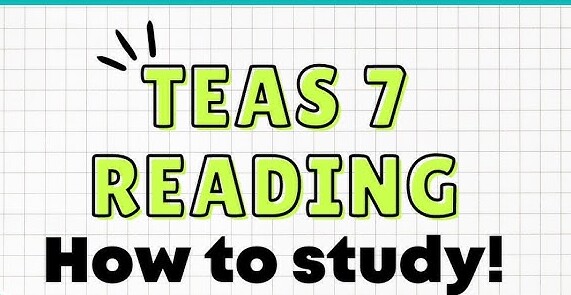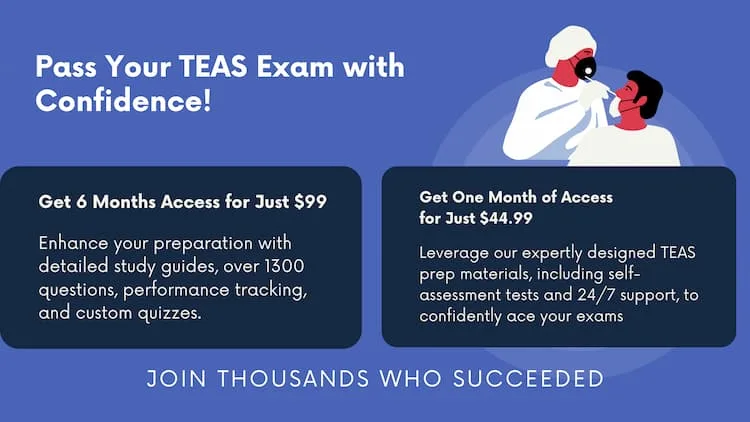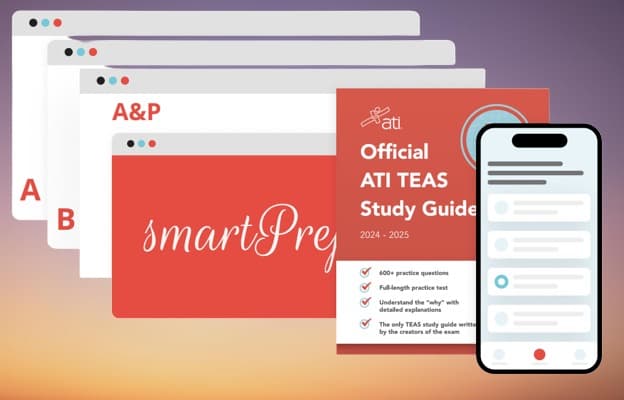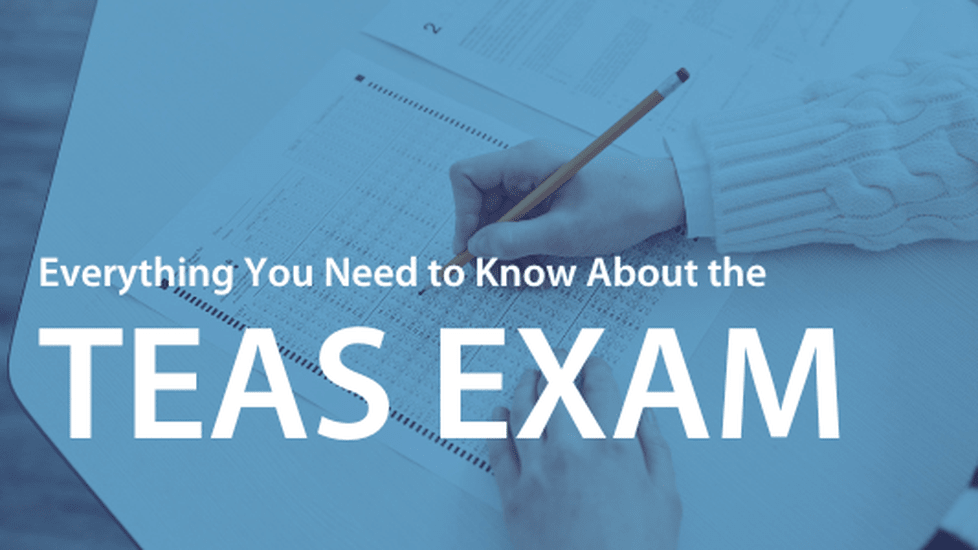Introduction
Admission requirements for nursing and healthcare programs vary, so students should check before applying to ensure they understand what will be required. Most institutions require candidates to pass the TEAS test to gain admission. This guide will help you ace the TEAS reading section with ease. Strong reading comprehension skills are vital for passing the TEAS test and will help your nursing career.
All You Need To Know About The TEAS Reading Section
The TEAS reading section encompasses different reading passages that candidates may encounter. Typically, these passages are curated to assess the student’s reading comprehension skills and ability to interpret and analyze information. Below are the different reading passages you can come across in the TEAS reading comprehension:
- Informative texts – such passages inform the reader about a given issue, topic, or issue. The texts could include explanations, factual information, or descriptions that require critical thinking and interpretation.
- Scientific articles—these passages present information related to research findings, scientific topics, and experimental studies. Candidates must read and understand the scientific concepts and pinpoint the critical information in the article.
- Literary passages—Literary passages could include excerpts from poems or novels, requiring the candidates to analyze characters, themes, or literary devices employed.
- Healthcare-related passages are common in the TEAS reading comprehension test since this is the nursing niche. They may cover patient care, health-related research, medical procedures, or healthcare policies.
- Social science passages usually focus on social issues, historical events, or societal trends. Candidates must understand the implications, context, and importance of the information relayed.
- Graphs and charts—Candidates may also encounter passages with visual aids such as tables, charts, or graphs. In these cases, students must interpret the data based on the visual information and conclude.
Question Format and Breakdown
You will have 55 minutes to respond to the 45 items in the Reading section. The TEAS Reading section consists of three topics:
- Key Ideas and Details (38% of the Reading section; 15 items): These questions focus on identifying important details and main ideas and drawing inferences.
- Craft & Structure (24% of the Reading section; 9 items) – the questions involve analyzing a text’s structure and examining how language is used to pass meaning.
- Integration of Knowledge and Ideas (38% of the Reading section; 15 items): Candidates must integrate information from the passage and make specific connections between ideas.

In addition, there will be six pretest questions that will not contribute toward your final score.
Essential Strategies for Reading Comprehension
1. Use These Active Reading Techniques
Active reading is a brilliant strategy whereby readers actively strive to engage with the text by going beyond the absorption of information. The technique entails interacting with the passage by making connections, asking questions, and summarizing information. This strategy is important for TEAS reading comprehension as it boosts your level of understanding and helps you pinpoint the key points in the text.
Active reading helps candidates grasp the content’s meaning, context, and importance. The strategy also enhances your critical thinking skills and ability to connect pieces of information in a passage. The technique helps students improve their vocabulary, build confidence in their reading abilities, and have a genuine interest in looking into various texts and topics. Below are TEAS reading tips you can employ:
- Ask yourself pre-reading questions. For example, what is the topic, and how much do you know about it? Why is the instructor assigning this reading at this stage in the semester?
- Bracket the reading’s key point or thesis with an asterisk. Pay close attention to the introduction or first paragraphs to find this information.
- Put down your highlighter. Instead, create marginal notes or comments. When you have the temptation to emphasize something, write instead. You can summarize the material, ask questions, and agree or strongly disagree. You can also jot down keywords to help you remember where essential topics are mentioned. Above all, try to engage in a discourse with the author.
- Create a summary of an essay or chapter in your own words. Do it in less than a page. Capture the main ideas and maybe one or two relevant examples. This strategy is an excellent way to ensure that you understand what the text says or is about.
2. Focus on Understanding Vocabulary
Key vocabulary in the reading passage offers crucial information and clues that let you understand the text even more. Recognizing key vocabulary ensures enhanced comprehension whereby candidates will understand the text better and find its literal meaning.
The key vocabulary will also help sharpen your critical thinking skills since focusing on the vocabulary makes you engage the text more deeply. Identifying the important vocabulary also means there is contextual understanding. These vocabularies carry the author’s tone, message, and purpose.
Dealing with Unfamiliar Words
You can use different TEAS test reading section strategies to decipher their meanings. They include:
- Understand the structure: Analyze the structure of the unfamiliar word by looking at the suffixes, prefixes, or roots. Common word parts can give the meaning of these complex vocabularies.
- Context clues – you can also use clues from the context to know the meaning of the challenging words. The context clues could be restatements, antonyms, synonyms, or definitions.
- Use reference tools or a dictionary – consult a dictionary when encountering new words. The dictionary or other reference tools, such as online websites, will give you the meaning of the words, their synonyms, and how they are used in sentences.
3. Analyze the TEAS Reading Test Questions
It is paramount to carefully read and understand every word. Paying close attention to the question’s structure and language enables you to navigate the content and provide accurate answers effectively.
You could read the questions twice or thrice to avoid missing a critical word or phrase that might shape your answer. Underline the important phrases or keywords in the text to highlight the important aspects of the question. These key terms will help you come up with the best answer.
Strive to identify the specifics the question is asking for. Is it asking you to make inferences, analyze different details, find key ideas, or evaluate arguments? Understanding what is required will be the silver bullet for the response.
4. Apply Critical Thinking Skills
Critical thinking is essential in TEAS reading comprehension. It helps candidates pick the best answer for the TEAS test reading section. Critical thinking entails carefully examining the question, finding key information, and finding the underlying purpose. The skills help learners approach the TEAS questions strategically and thoughtfully. With critical thinking skills, you will evaluate your answer choices based on accuracy, alignment, and relevance to the question.
Candidates can apply critical thinking skills in different ways. They can evaluate answer choices by assessing the available answers against the question. They should pick the answer that gives the most logical response and best addresses what the question asks without leaving any relevant information out. You could also cut out the incorrect answers. For the multiple questions, some answers will not make sense, which you must eliminate first to remain with the seemingly right answers.
5. Develop a Reading Pacing Strategy
Managing your time effectively could be the key to your success in the TEAS reading test. It will ensure that you attempt all the questions and maximize your performance.
A pacing strategy will allow you enough time to read the passages and answer the questions efficiently. Thanks to the reading pacing strategy, you will read to understand the passage and analyze the questions without rushing, giving the correct responses.
This strategy entails various techniques, such as skimming the passages first. Roughly review the passage to get an overview of the main ideas and context. Then, divide your time to read the passage intensively, depending on its length. Take a balanced approach when allocating the time to read the passages. Then, prioritize the questions. Identify the questions that require more time and allocate them extra minutes. The easy questions should have the least time.
You can mark the most challenging questions and come back later to handle them. Start with the more straightforward questions to tackle as many as possible. If there is still time left after handling the simple questions, come to the challenging questions and work on them.
Conclusion
Succeeding in any exam requires some level of commitment and strategies. The TEAS test reading section of the TEAS test is no exception. You have to prepare fully and have a robust plan on what to do. This article gives you top-notch strategies to ace your exams and join your institution of choice to pursue your nursing career. Implement these tips and hacks to maximize your chances of passing the TEAS test reading section.




